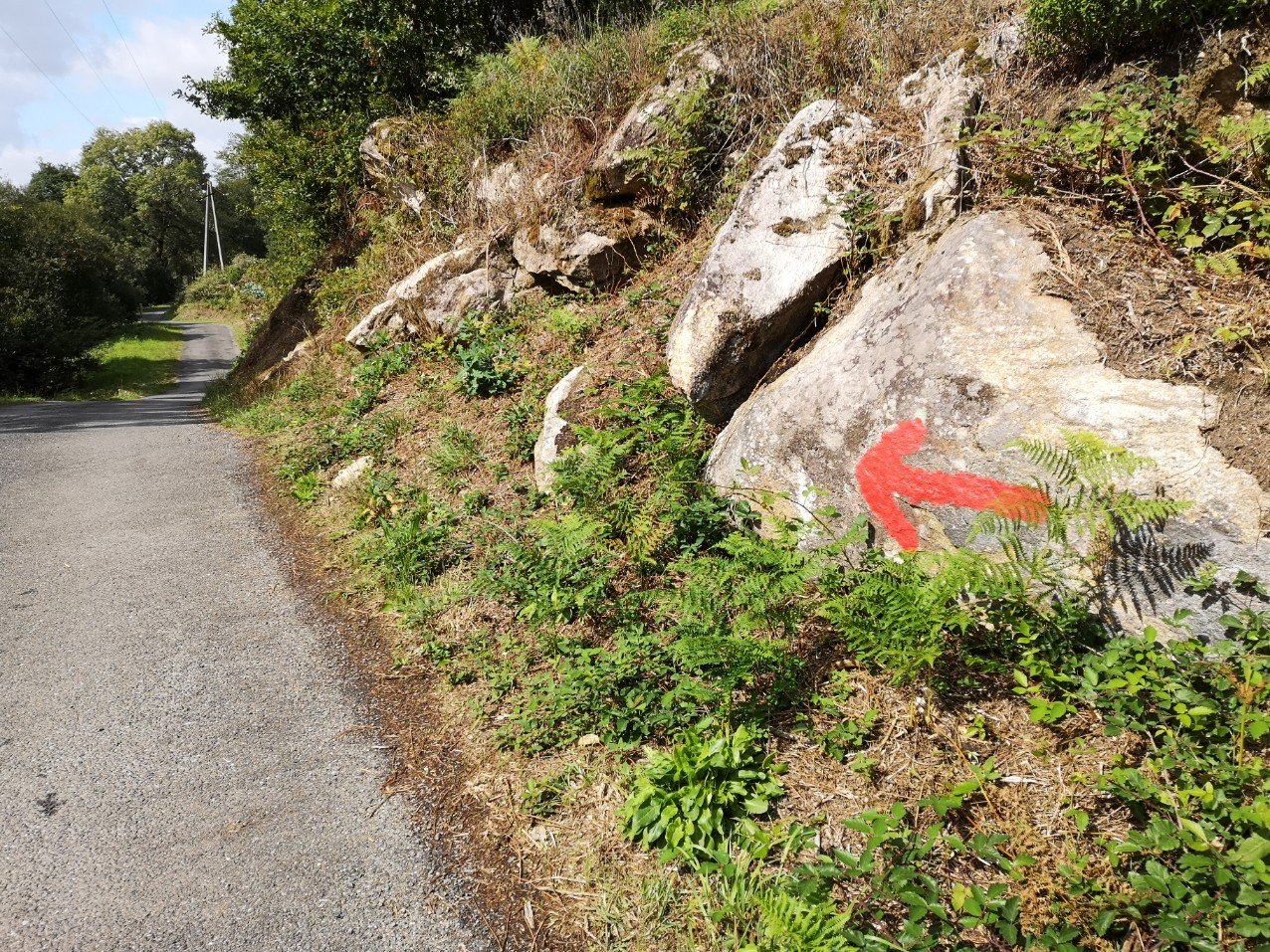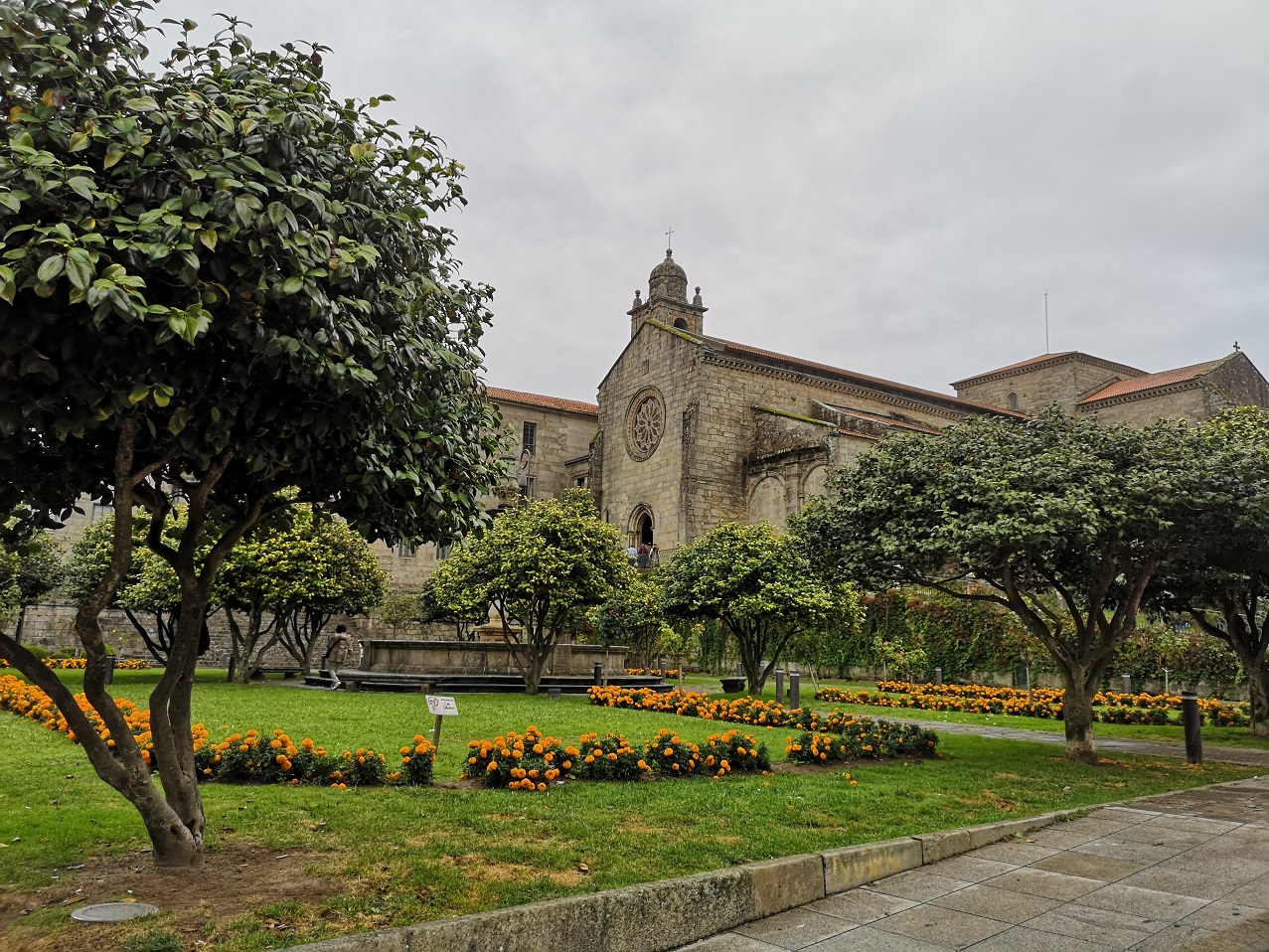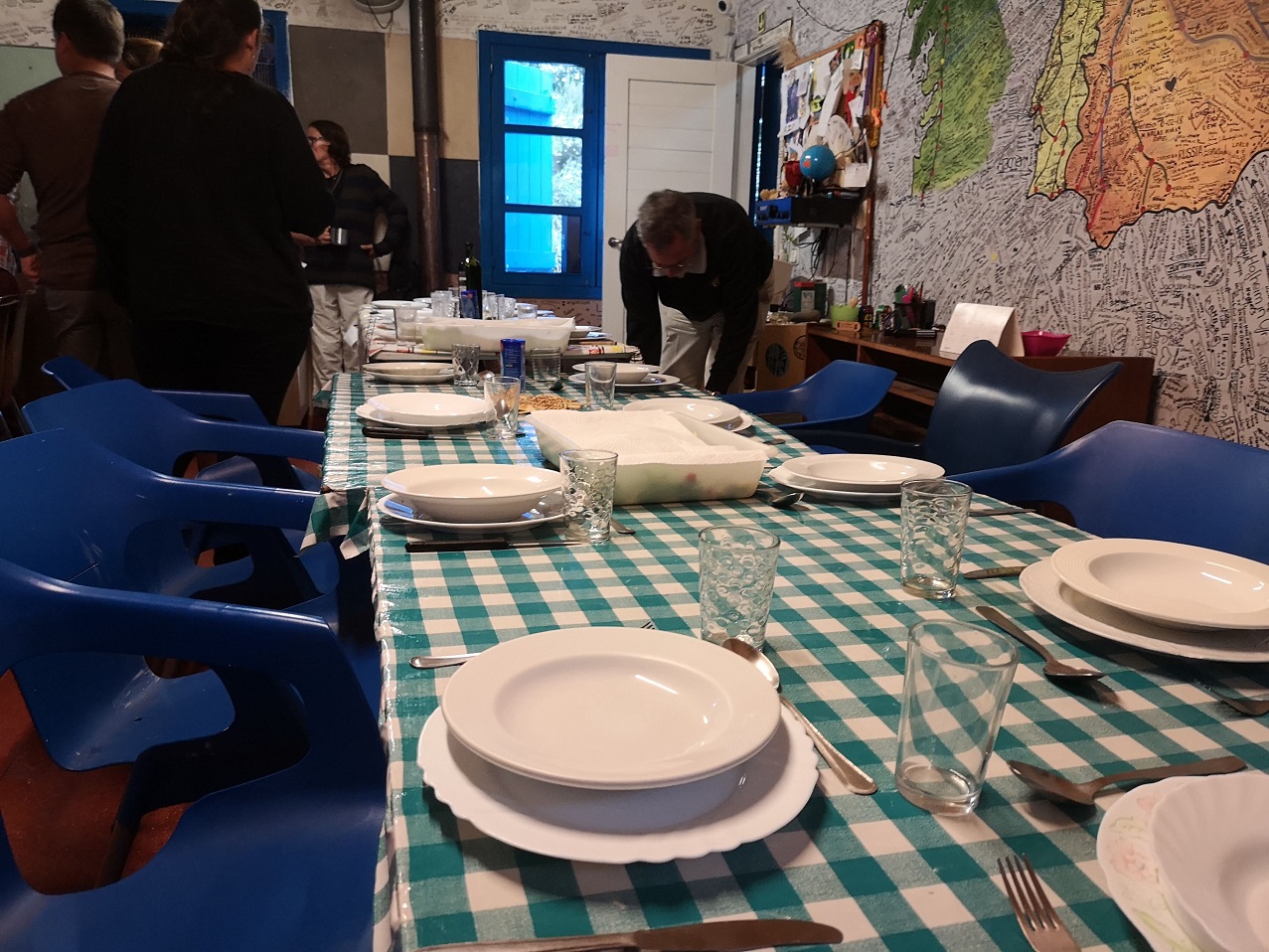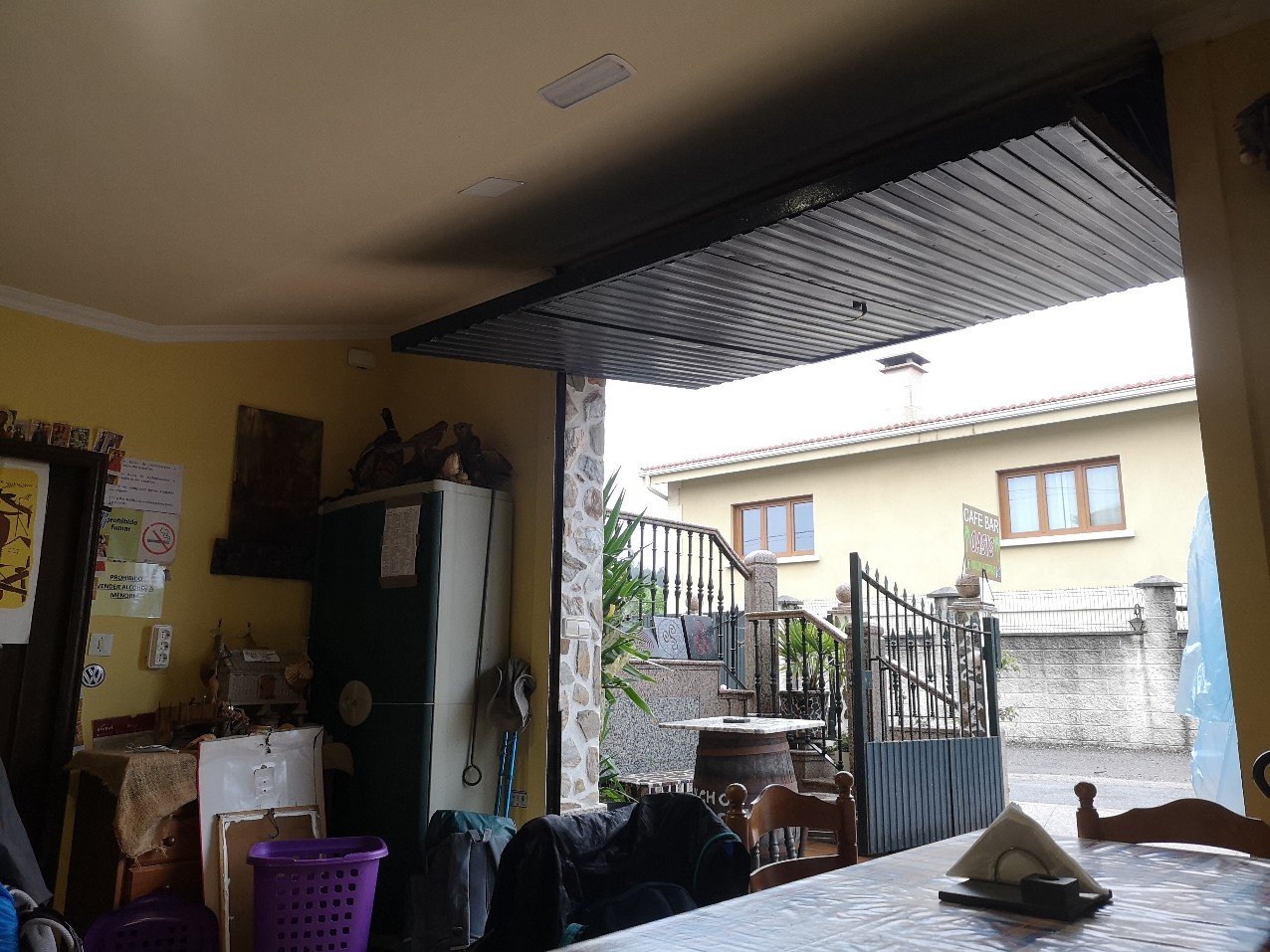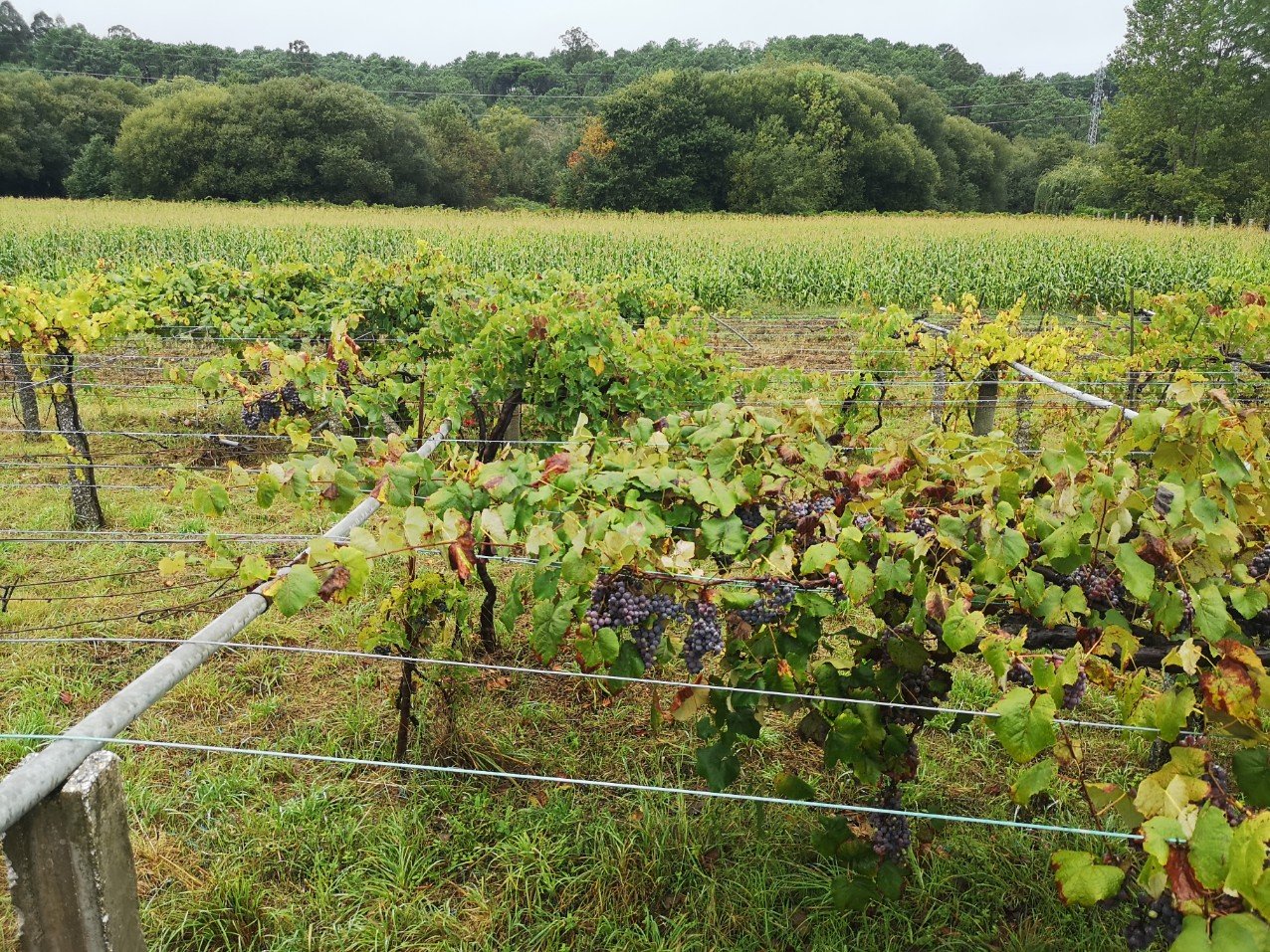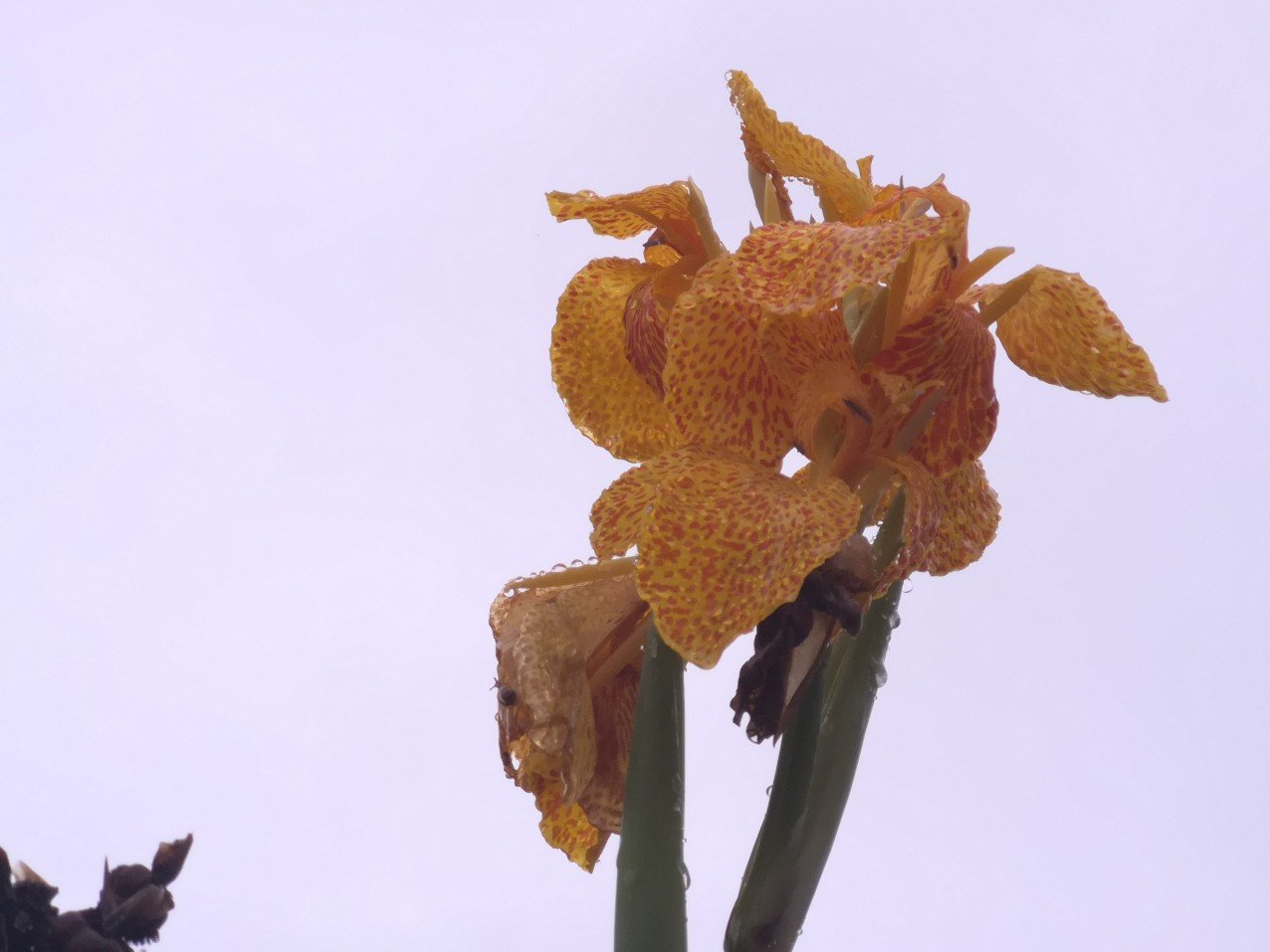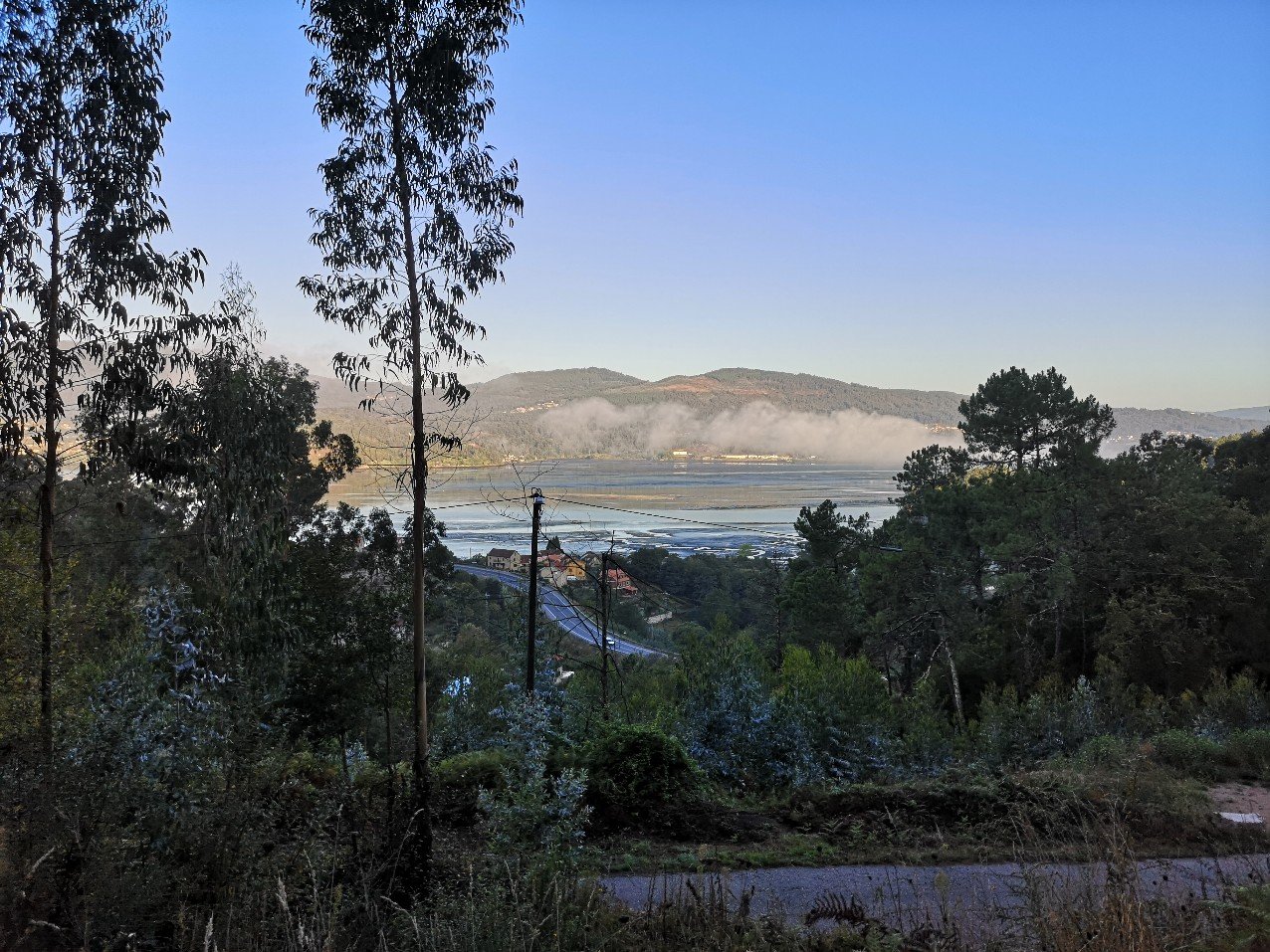October 2nd 2019. The final leg of the Portuguese Camino de la Costa or Caminho da Costa from Porto in Portugal to Santiago de Compostella in Spain. 125 kms in total, today was a walk of approximately 15 kms.

Retracing my steps from the night before, I left the albergue at Teo at 7.45am and began the last leg of this Portuguese camino. It was misty, cold and the path went steeply up. Thankfully the weather cleared later. I had to take painkillers for my foot for only the second time on this way. It didn’t hurt when I was sitting down – a clear message.

Overall, this way into Santiago de Compostella is hilly and it was hard going, however it was lovely countryside. I breathed in the fresh air before entering the city.
We hiked forested paths, up and down hills, crossed rivers and railways, passed shopping centres, went down narrow alleys between houses, climbed a steep hill beside a hospital, and then walked on city streets. Spencer Linwood’s blog of this final day


According to tradition, after Jesus’ Ascension into heaven, the Magdalene…boldly presented herself to the Emperor Tiberius Caesar in Rome to proclaim the resurrection of Jesus Christ, with an egg in hand to illustrate her message. Holding the egg out to him, she exclaimed for the first time what is now the universal Easter proclamation among Christians, “Christ is risen!” The emperor, mocking her, said that Jesus had no more risen than the egg in her hand was red. Immediately, the egg turned red as a sign from God to illustrate the truth of her message. The Emperor then heeded her complaints about Pilate condemning an innocent man to death, and had Pilate removed from Jerusalem under imperial displeasure. Mary Magdalene continued her mission as an evangelizer, contemplative, and mystic in the heart of the Church.
By Grechen Filz (link under photo above)

At one point there was a cacophony of hunting dogs and two men wandering around looking very guilty, a huge 4×4 a little further on. The hounds seemed to be nosing around for something, but it wasn’t clear what and otherwise the area was deserted. Moving away, up a inclinne, I passed a female backpacker going in the opposite direction, so I repeatedly glanced back. I knew she would be passing the men and wanted to keep an eye out for her in case she needed back-up.

Much to my disappointment, I started to feel some back pain as I traipsed up towards the city centre, searching for signs and arrows to no avail.
Tip: Remember that google maps is all but useless in the Poruguese / Spanish countryside, but great in towns and cities, so at this stage when there is a dearth of directions, you can switch on the GPS.
The outskirts seemed to go on and on and so I took an elevenses pitstop in a city cafe enjoying some green tea and sweet Santiago tart which I remembered well from my first visit in 2016, when my life had already started to change.

I arrived in the main square at 12.15. Someone asked whether I was going to lie down. I didn’t know about this, but apparently there is a tradition to prostrate, head towards the towering building and admire it upside down, so I did. Of course.
This was my second time in Santiago despite having walked three caminos. When I walked the Via de la Plata, I initially headed south, towards Seville (1000 kms away). Later I started there, walking northwards until I got back to where I had finished that section the year before. I didn’t do the final stage for a second time, and so didn’t visit Santiago. I didn’t go to the special Mass this October 2019 either, for the same reasons.


I had booked the Roots and Boots hostel in advance and was very happy with it. Very close to the centre, the rooms are small (no extensive dormitories) and mine had a magnificent view of the cathedral. There is a pretty, enclosed garden with tables and chairs by a reasonably priced, hole-in-the-wall, cafe. I sat out there until quite late at night, getting slightly chilly but enjoying the situation, especially given it was October.
I had lunch in a large restaurant, very popular with pilgrims. I was surprisingly tired and the large portions and very quick service suited very well!



Then I left clothes to be washed at a rather nice launderette (as launderettes go) on Rua das Hortas which had a decorated and flowering courtyard. You can also get washing done at Pilgrim House, a veritable Santiago institution.
I had not planned what I would do next until a few days before, when I came across a post on the Camino forum which set me off on a new trail. I contacted the redoubtable Rebekah Scott at her Peaceable Kingdom to ask if I could stay with her at Moratinos on the Camino Frances, in the name of research. She kindly obliged, but later sent me an email saying that she couldn’t host me after all because she looks after a hostel on the Camino Primitivo and had to go up immediately. Unless, she added, I wanted to go too. More on this adventure later…..


Excellent Stingy Nomads guide to the Poruguese Caminos – all the variations and pretty much anything else you want to know.

Footnote: If you have some cash at the end of your camino, you could try the Parador, one of the famous Spanish hotels which offers pilgrims a free lunch, so I am told.





































